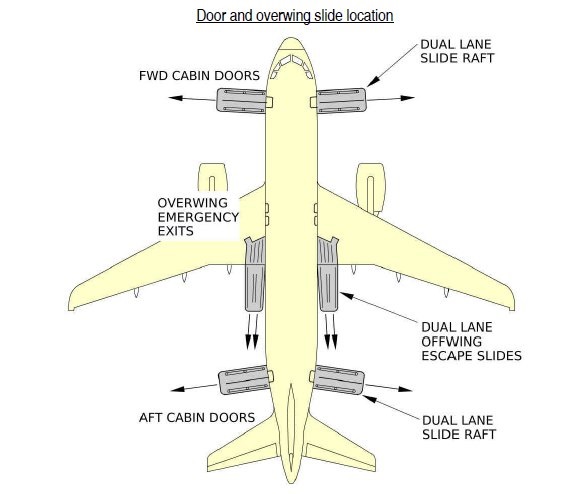The over wing exits are considered secondary exists in a ditching, while the four other exits in the aircraft remain the primary emergency exits. The reason why over wing exits are not used in a ditching is because the escape slides on those exists are simply slides and not slide rafts. The escape slides on all the other doors are designed to be floatation rafts with a carrying capacity of up to 55 occupants. The slide rafts can also be separated from the aircraft and it can become a remote raft. It is highly advised to cut the raft from the aircraft and move away from the air frame as soon as time permits so that you do not sink away with the aircraft. On the other hand, the over wing slides are stowed on the aft belly fairing of the aircraft and cannot be detached from the aircraft. They are also too narrow and not designed to hold passengers for a long period of time. So, they should not be used as safety devices in a ditching.
The A320 escape slides and dual lane slide rafts.
If the situation demands, then over wing exits can be used in a ditching. The escape slides will automatically come on when the exit is operated, but they should not be used as an escape. The passengers or the crew who uses these exits should get off the aircraft and either swim to an active raft, or if unable, hopefully get rescued by someone. Because the wings can be slippery in a ditching to assist passengers to get off the aircraft, we have life lines stowed in a small over head compartment near the over wing exits. The crew is trained to attach the life line from the exist door frame to an attachment on the wing (next time when you fly an A320 and if you get to sit near the wing try to find a small yellow attachment). The passengers can then hold these lines and get off the aircraft without a risk of falling off.
The life line attachment.
Author – Anas Maaz






